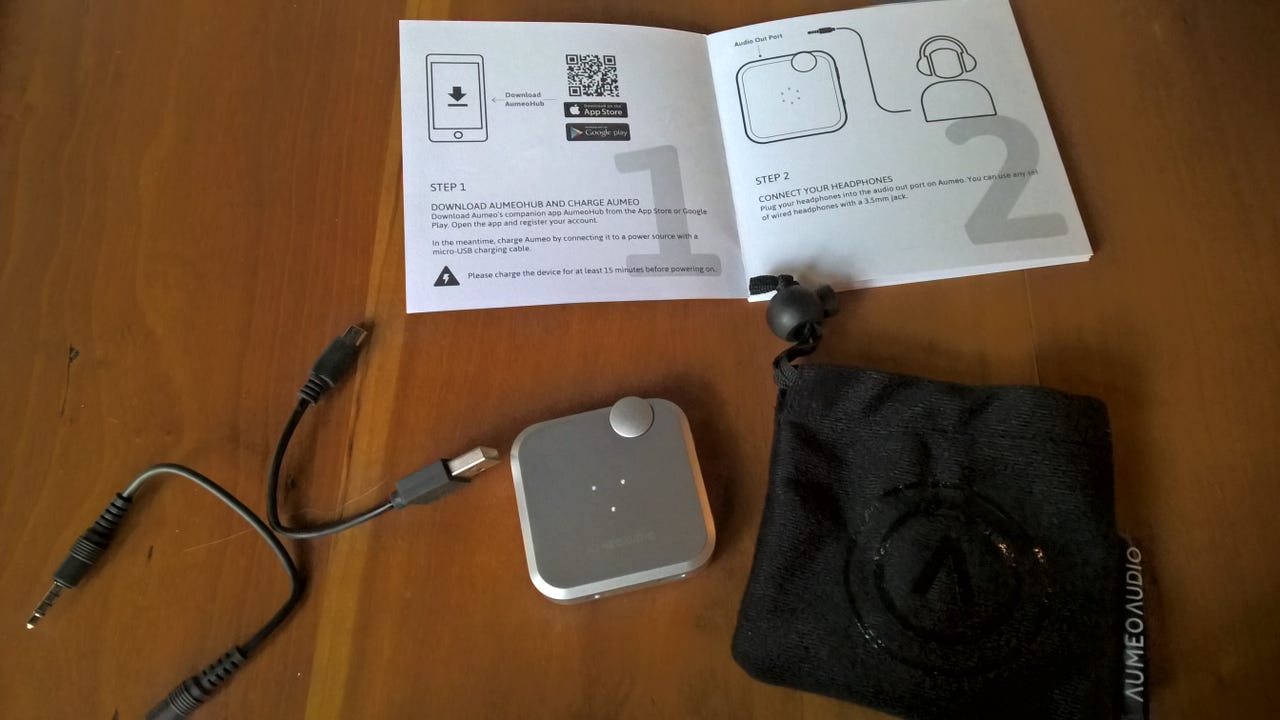Does tailored audio sound better? It depends on your ears


The Aumeo DSP comes with charging and audio cables and a carrying bag
You don't have to think of yourself as deaf to have quirks in your hearing: ear infections and the antibiotics used to treat them can affect how well you hear certain frequencies, as can age and prolonged exposure to high volumes. Plus we all just hear sound a little differently -- so wouldn't music sound better with some custom processing?
There are plenty of digital sound processors you can attach to your smartphone to enhance the audio (some of them doubling as battery packs), or give you the audio signature of a specific venue like a concert hall or a cosy club.
Different headphones are also tuned for different audio profiles -- Etymotic Research headphones prioritize a flat, neutral response, while ACS's in-ear buds have a much richer, warmer sound.
Instead of leaving you to tweak the sound with sliders and presets or pick headphones with the sound you like, Aumeo Audio's DSP comes with an app that gives you a simple hearing test -- measuring your hearing sensitivity to eight different frequency bands in each ear -- and then tweaks the audio you hear to compensate for that.
In principle, this is a great idea: you should hear music that's closer to how the musicians intended it to sound, and you won't have to turn the volume up just to hear the frequencies your ears can't perceive as well. In practice, the Aumeo DSP is a little fiddly and perhaps too expensive for casual use.
The design is stylish but cryptic; we'd rather have a simple on/off button and some labelled indicator lights rather than an unlabelled button and a circle of LEDs that use different patterns of lights to show the charging level, turning on and off, pairing and whether the sound is being processed.
You pair the Aumeo to your phone via Bluetooth, but plug your headphones in physically -- there's no support for Bluetooth or Lightning headphones -- and then step through the hearing test by turning on-screen dials until you can barely hear each frequency. That profile is synced to the Aumeo DSP and is used whatever audio device you plug in.
This means you can set it up on your phone and then attach an old iPod or Zune, or even your hi-fi system, to get the personally tuned audio, using the second headphone port. The Aumeo charges over mini-USB and plays for six to eight hours, depending on whether you're playing wired or wireless.
Aumeo lets you set your hearing sensitivity to eight frequency ranges for each ear.
You can create multiple profiles and choose which one to send to the Aumeo -- maybe you're sharing it with someone else in your family, or you want to tune it differently to use with different headphones.
You can look at your hearing sensitivity results in the Aumeo app.
We tried Aumeo out with multiple headphones, including the earbuds bundled with iPhone and Samsung devices, Bose noise-cancelling headphones, and two different Etymotic in-ear headphones. We then asked two friends who have tinnitus and hearing loss in certain frequencies to try them out. The best and most noticeable results were with the Etymotic headphones, which have a deliberately flat response.
Everyone noticed a difference in the apparent sound quality between having the Aumeo on and off, although we also noticed effects ranging from slight sibilance, to a lack of clarity in some sounds, to simply the feeling that the sound had been processed. The question was whether the improvement was worth the $199 price tag -- at half the price, it would have won far more fans.
Even though you can turn the Aumeo effect on and off to compare, there's a slight break in the audio each time, making the comparison less clear. Also, the volume is -- or appears to be --slightly higher with the Aumeo on. That could be the Aumeo compensating for your hearing deficiencies, or it could simply be the effects of processing the audio through a DSP (and there's a known psychoacoustic effect where turning the volume up makes audio sound higher quality).
How valuable you find the Aumeo device is going to depend on your individual hearing: it's an intriguing idea that's most compelling if you really need it.
If you have hearing damage that cuts out a few specific frequencies, then amplifying them with Aumeo can make listening to music much more of a pleasure -- once you get used to the difference, and bearing in mind that you won't get the same improvement on anything you can't listen to through headphones.
We'd also like to see the design become much more straightforward: you should never be confused about whether you're turning a device on, off or into pairing mode when there's plenty of space on the case for clear controls and indicators.